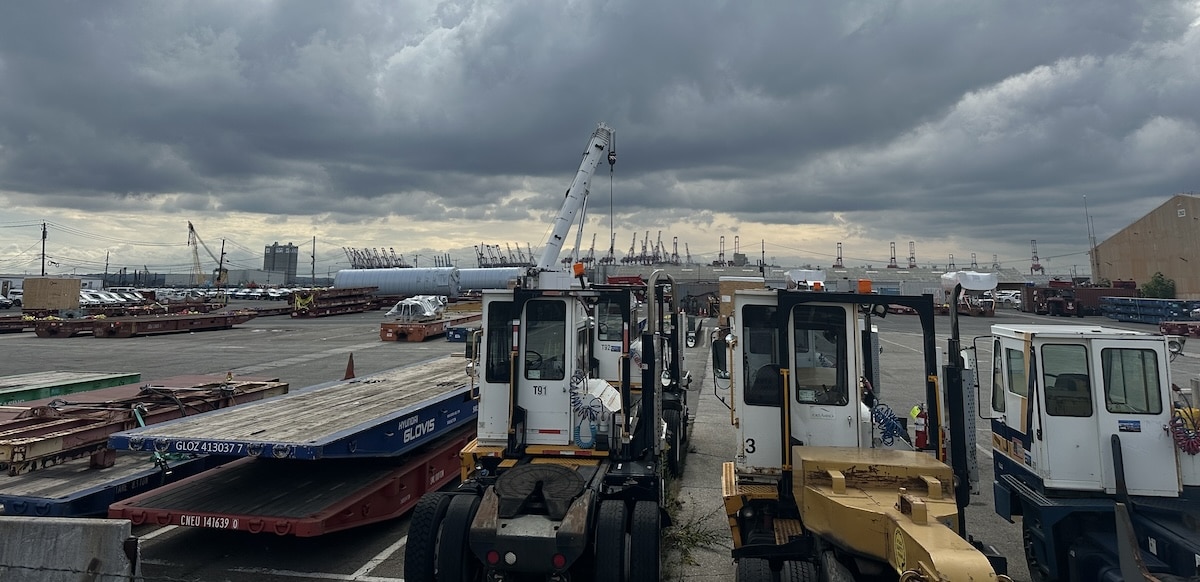East Coast Longshore workers with the International Longshoremen’s Association are returning to work, after three raucous days on the picket lines. They received a promise of a $24-an-hour pay raise over six years, bringing top pay from $39 to $63.
The strike paralyzed shipping in huge port complexes like Newark, Houston, and Charleston, stopping loads of fruit, vehicles, and heavy equipment. It was the first coastwide strike for the ILA since 1977.
The sides will return to bargaining on the other big issue of the strike, automation, extending the old agreement to January 15. The Longshore union negotiates with a consortium of shippers and terminal operators known as the U.S. Maritime Alliance, or USMX.
The union had leverage because of the upcoming presidential election, and as he pledged, President Joe Biden refused to break the strike by invoking the emergency powers available to him under Taft-Hartley.
Screaming for Intervention
The Chamber of Commerce and the National Association of Manufacturers demanded that Biden end the strike, claiming that reconstruction from Hurricane Helene would be hampered.
However, breaking a strike in this way would be risky for the employers, because port workers are in a strong position to institute slowdowns, which would leave ships unloaded and docks piled with goods for export.
Instead, Biden administration officials appear to have leaned heavily on the employers to settle. Transportation Secretary Pete Buttigieg called on shippers to stop adding surcharges, which could have increased their revenue, counteracting the costs of the strike.
Julie Su, Secretary of Labor, came in for praise from ILA President Harold Daggett, speaking from the picket line: “She’s knocking down doors. She’s trying to get us fair negotiations.”
Clips of Daggett criticizing USMX circulated widely. The terminal operators “got real rich during Covid when everybody stayed home while my people went to work every single day and some of them died on the job,” he said as the strike started. “We make their money and they don’t want to share it with us.”
While, under the ILA constitution, workers do not have to hold a vote to strike, several locals held votes and were unanimously for striking.
Leadership exercised tight control over picket lines, with members refusing to speak to reporters, but those who broke protocol said they were inspired by last year’s Stand-Up Strike by the Auto Workers and the UPS Teamsters’ contract campaign. Both unions put out statements in support of ILA strikers. Dockworkers from Spain and the West Coast came to picket lines in New Jersey.
In Florida, with important ports in Jacksonville and Miami, Republican Governor Ron DeSantis said yesterday he was dispatching the Florida National Guard and Florida State Guard to “maintain order” and “where possible, resume operations.” Workers reacted with skepticism.
Lagging Behind
ILA members have lagged behind West Coast Longshore workers (ILWU), whose starting pay in the most recent contract ($40) exceeded the top pay for East Coast workers ($39). East Coast workers started at $20 and rose to $39 over six years.
This tentative agreement would change that, with a $6 raise in the first year, followed by $5, $4, and $3 for three subsequent years.
However, pay bumps on the West Coast have accompanied expanded automation. Two fully automated terminals now operate within the Long Beach complex near Los Angeles.
“California dockworkers have already lost jobs because of automation,” said a mechanic with ILA Local 1804 on the Elizabeth, New Jersey, picket line. “We are trying to prevent that from happening to us.”
Historically it has been much easier to win pay gains than to forestall job losses through automation. The outcome of this strike falls into that pattern.
As the ports moved to containerized shipping 50 years ago, leading to job cuts, the union negotiated a royalty on each ton shipped, to be paid by the employers, to make up for job losses and supplement pay for members, whose jobs intensified. An employer-imposed cap on the royalty fund was an issue in negotiations, Daggett said from the picket line.
READ: Remember These Greedy Low-Wage Corporations That Prioritize Inflated CEO Pay Over Workers
The agreement appears to have raised or eliminated a cap on employer contributions to this fund, though details are unclear.
Negotiations have been opaque to members. They will vote on a full agreement when negotiations on other issues are finished. Currently the old agreement has been extended and pay raises will go into effect after the vote.
The starting and top rates are not the whole story on pay, because complex work rules defended by the union over decades supplement the hourly rates. Longshore workers also book a lot of overtime, so mainstream news outlets estimated that the average worker makes over $100,000 a year.
Daggett himself came in for criticism in the press for his salary from the union, around $900,000, and his big house—the New York Post ran an aerial shot of a mansion with a four-car garage and big pool.
Pensions remain a sore spot in the ILA. Workers in Houston and Philadelphia have no pension at all, while many other East Coast workers have barely discernible ones. Pensions on the West Coast are uniform across ports, and higher overall.
Plugged Into a Machine
The demand to stop further automation resonated with workers on the picket line, and workers carried pre-printed signs saying “Machines Don’t Feed Families, ILA Workers Do.” They reported observing electronic innovations that could cost jobs if allowed to continue, such as radio frequency ID tagging of entering trucks.
While the current contract prevents elimination of a human operator completely, new machinery increases efficiency and intensifies the work, eliminating jobs. In Hampton Roads, Virginia, introduction of new ship-to-shore cranes eliminated tractor operator jobs.
Workers described intensification of the workload as a result. A tractor operator has some autonomy and can take breaks, but new machinery plugs the worker into a computer system, “and you’re chasing it the whole shift,” one worker said. “You’re wiped out.”
But that part of the agreement is still to be negotiated.
This article was originally published at Labor Notes. Don’t miss an issue, subscribe today.






